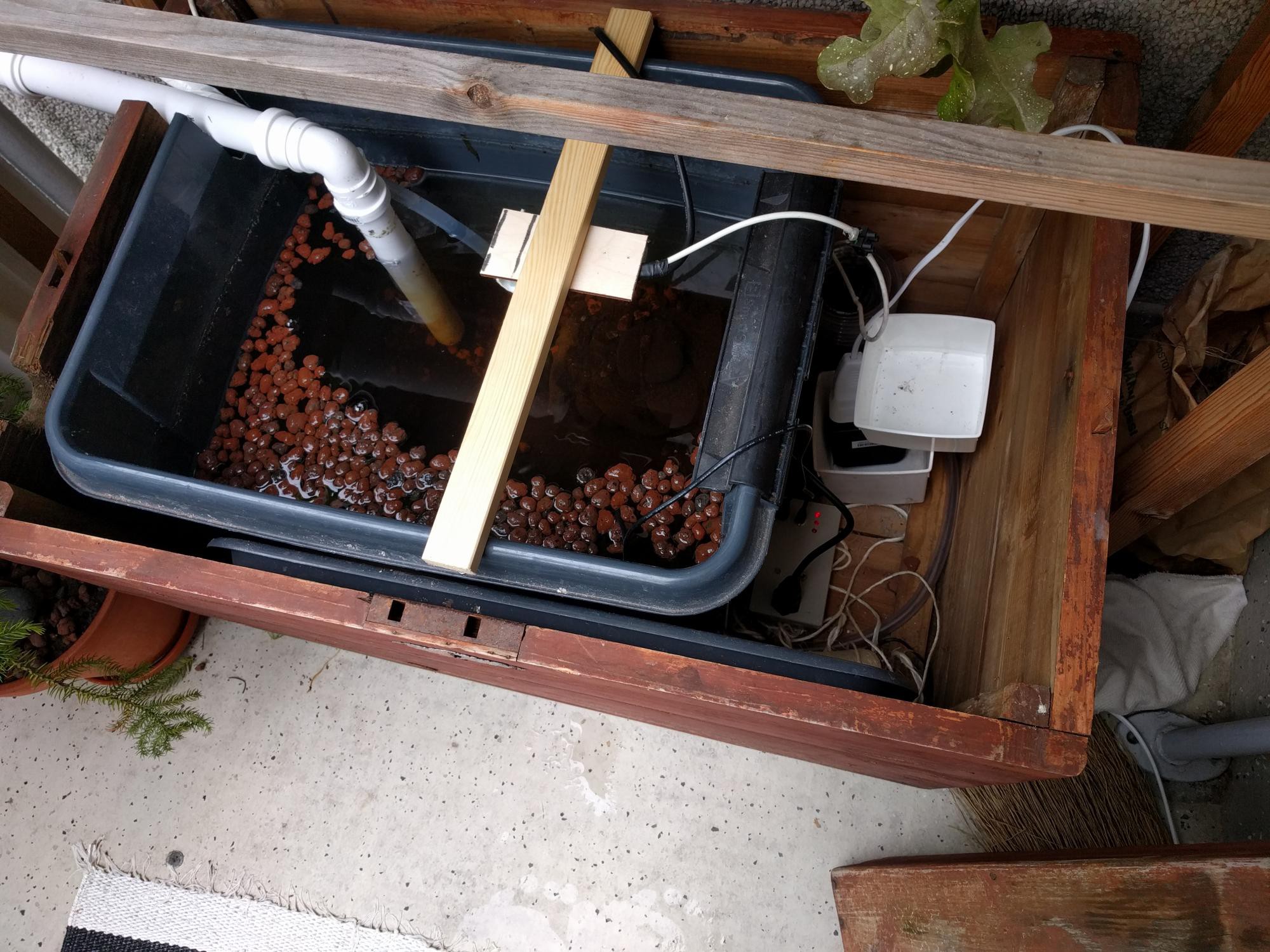The field testing - phase 1 - is now done. The unit has been deployed and after minor fixes its now up-n-running nicely. It was deployed on 6.6. so it has been running for a week. Some fixes/changes:
- Water level switch was inverted - luckily i had code ready, just change false -> true
- The thingverse logging was not good, improved
The latest version has been running only for day or so, lets see. The thingverse logging was changed from 15min interval to
- If pump state changes -> push
- If draining is done -> push measurement
- Push if not pushed in 15min
This means that night time it will push in 15min delay, and during day it will push every pump-time (assuming <=15min, that is the case here). I also added new measured delays: delay of water detect to go high after pump has been switched on, and delay of water detect to go low after pump has been switched off. I hope to see a) pump wearing and b) roots filling up the tube from these figures. Lets see how it goes.
But the most important part is here, pictures:

Picture 1: The full system. Water is pumped from the red container to upmost tube, where it slowly flows back to the container. The water detect switch is located at the pumping location.

Picture 2:And here you can see the water container and the controller little red light.
I am bit sceptical about the HTTP server from the ESP8266 library, since
i think its not taking account DOS attacks in any proper manner. If i
find my self with too much free space i might bake my own memory and
security hardened arduino-esp-http-server.
And now starts the hard part ; endurance testing. Lets see if it works through the cold Finnish summer.
 Pauli Salmenrinne
Pauli Salmenrinne
Discussions
Become a Hackaday.io Member
Create an account to leave a comment. Already have an account? Log In.